Janet L. Nelson
KING AND EMPEROR
A New Life of Charlemagne

PENGUIN BOOKS
UK | USA | Canada | Ireland | Australia
India | New Zealand | South Africa
Penguin Books is part of the Penguin Random House group of companies whose addresses can be found at global.penguinrandomhouse.com

First published 2019
Copyright Janet L. Nelson, 2019
The moral right of the author has been asserted
Cover: Initial K from the title page of the Capitularies of Charlemagne, compiled by Ansegisus in 827 (Beinecke Ms 413 fol 165), in the Beinecke Rare Book and Manuscript Library, Yale University
ISBN: 978-0-241-30526-3
This ebook is copyright material and must not be copied, reproduced, transferred, distributed, leased, licensed or publicly performed or used in any way except as specifically permitted in writing by the publishers, as allowed under the terms and conditions under which it was purchased or as strictly permitted by applicable copyright law. Any unauthorized distribution or use of this text may be a direct infringement of the authors and publishers rights and those responsible may be liable in law accordingly.
To Christine and Fritz, sine quibus non
List of Illustrations
Bonze equestrian statuette of Charles ( RMN-Grand Palais, muse du Louvre/Jean-Gilles Berizzi)
The tomb of Abbot Willibrord at Echternach ( Alain Dierkens)
The River Oise at Quierzy ( Fritz Groothues)
(a) The skeletal remains of Himiltrud in the crypt at Nivelles ( William Stafford); (b) chart showing chronological distribution of Charless charters (courtesy of Billy Nelson)
The Great St Bernard pass ( Buena Vista Images/Getty Images)
The pass of Roncesvaux ( Janet Nelson)
Saxon sword ( LWL-Archologie fr Westfalen/S. Brentfhrer)
The papyrus letter of Maginar ( Fritz Groothues, with kind permission of the Archives Nationales)
The Tassilo Chalice ( Stift Kremsmnster Kunstsammlungen, The Best Kunstverlag)
The RhineMosel confluence at Koblenz, near St-Goar ( Leamus/Getty Images)
The new coinage, 793. (Monogram denier, Pavia, Borne hoard 1987 (Overijssel, Netherlands). Museum TwentseWelle, Enschede. Photograph Bouke Jan van der Veen. With kind permission of Simon Coupland)
The church at Aachen ( LOOK Die Bildagentur der Fotografen GmbH / Alamy Stock Photo)
Lateran Mosaic with St Peter, Pope Leo and King Charles ( Manfred Luchterhandt)
The noble warrior with his sword (Malles Venosta, San Benedetto Photo SCALA, Florence)
A small section of the Breve commematorium (The Short Report), 808 (The Basel roll ffentliche Bibliothek der Universitt, NI2, Bl. 12)
A small section of the cut-marble inlays (opus sectile) in Charless church at Aachen ( LVR-Amt fr Denkmalpflege im Rheinland, Silvia Margrit Wolf)
Fuller descriptions of and comments on the images can be found on .
List of Maps
Western Europe, c.600
Belgica
The (partly putative) travels of Willibrord, c.658739
The division of the Frankish realm in 742
The empire of Charles at its maximum extent
Charless itinerary
The Saxon wars, c.772804
Alpine passes
Italy in the time of Charles
Eighth-century Rome
Plan showing archaeological finds at Aachen
The fossatum magnum (canal) of 7923
The Divisio of 806
The Danubian lands
Frontiers and campaigns on land and on sea
Elements from courtesy of Mike McCormick, Harvard University.
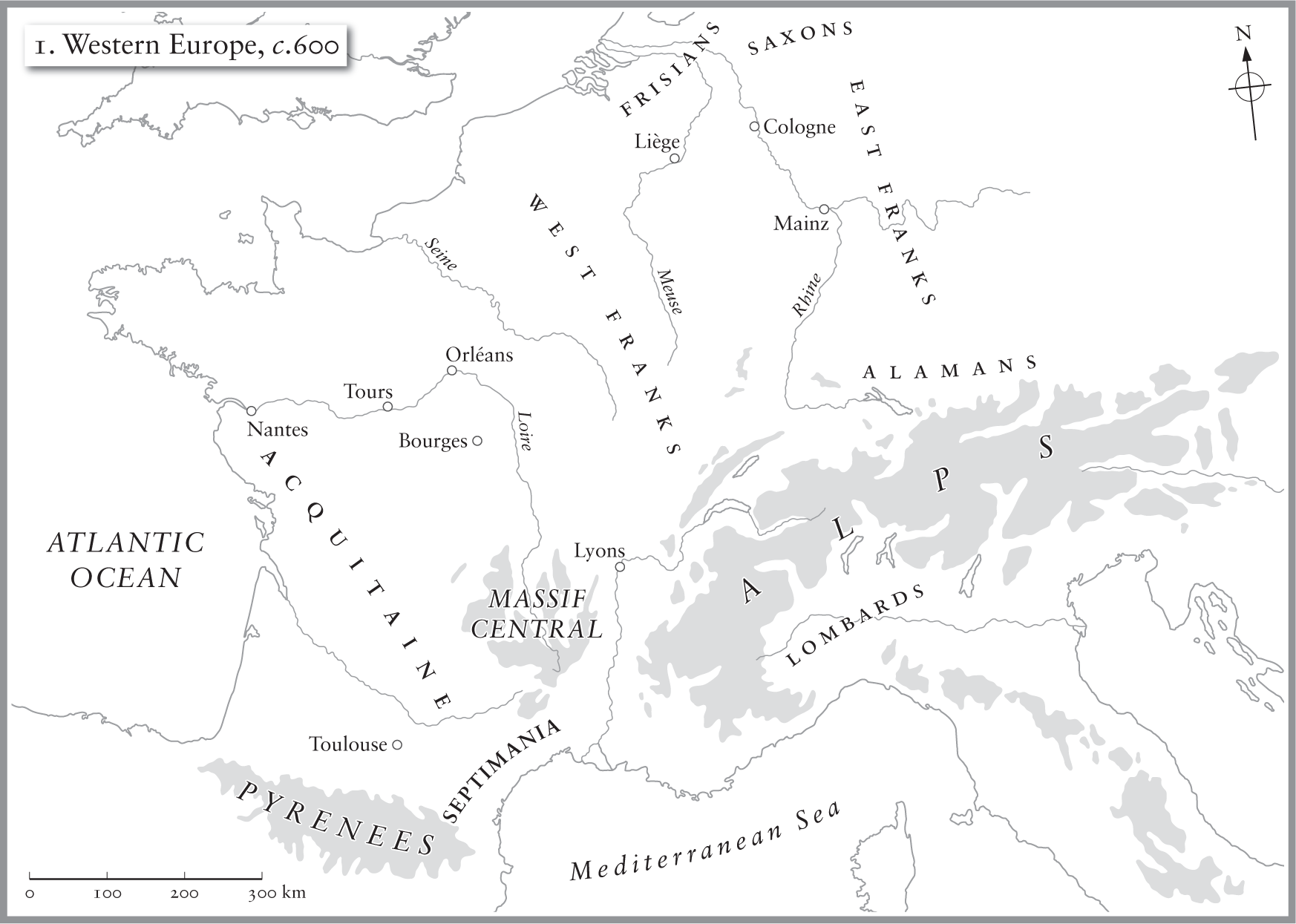


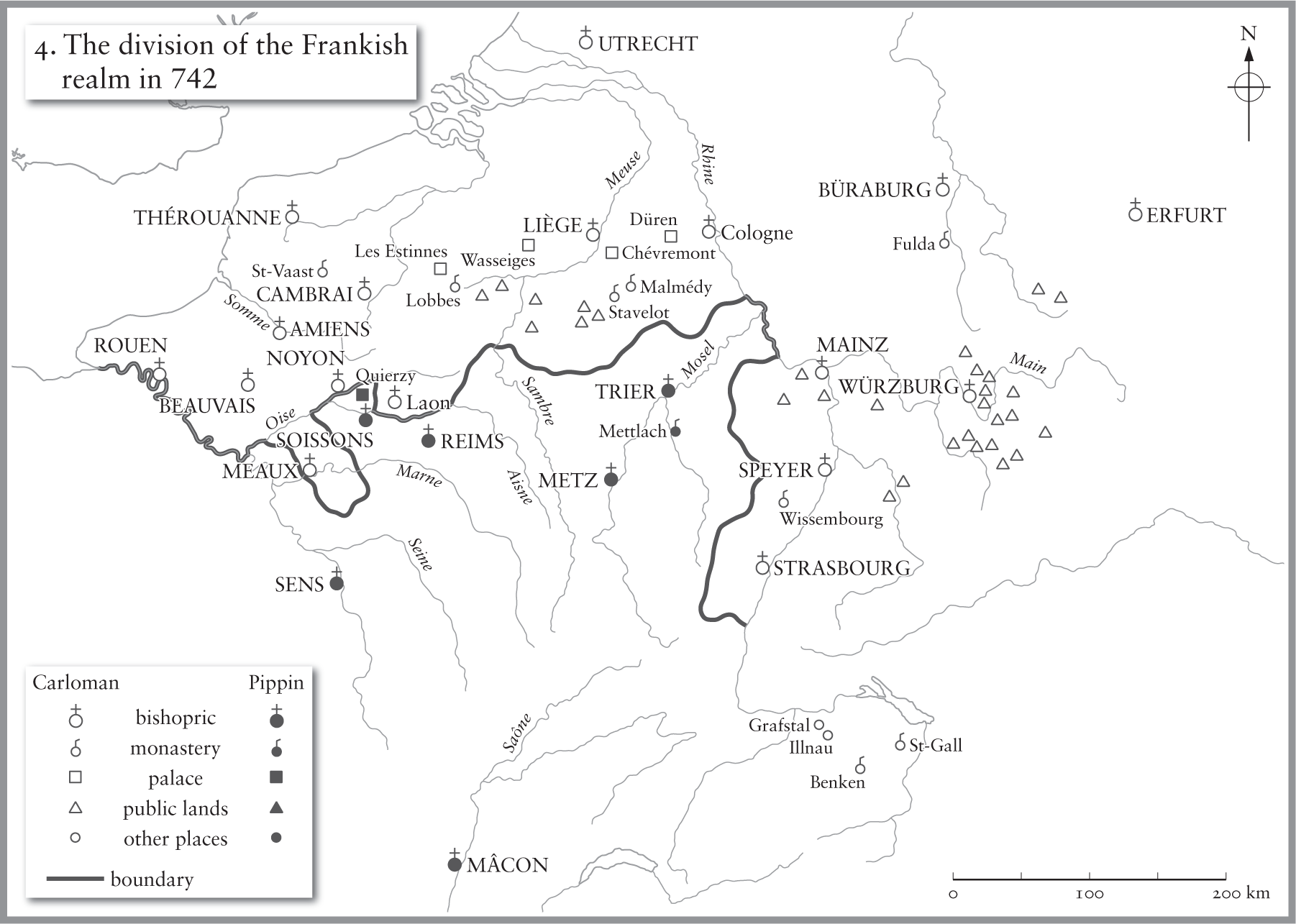
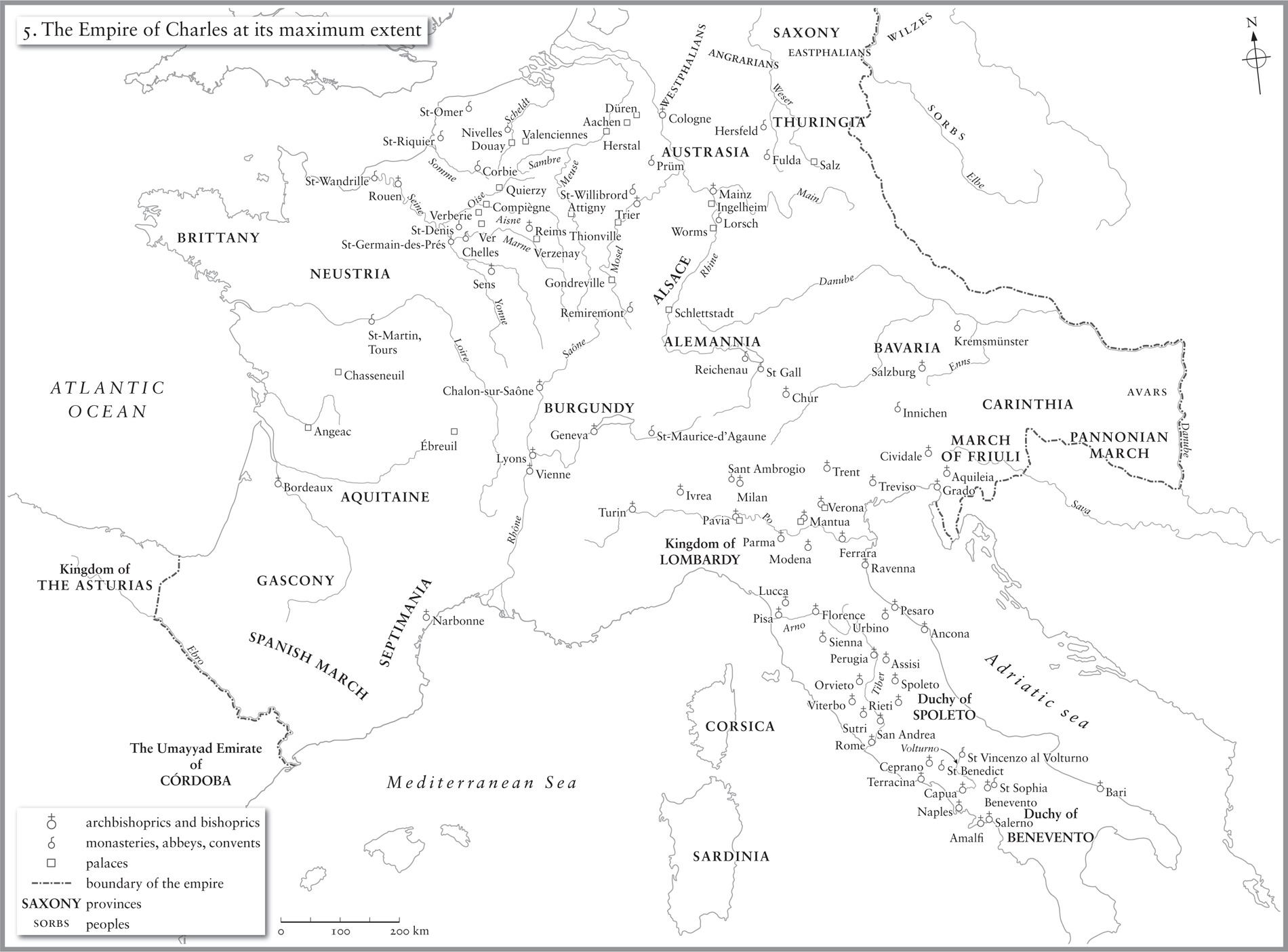
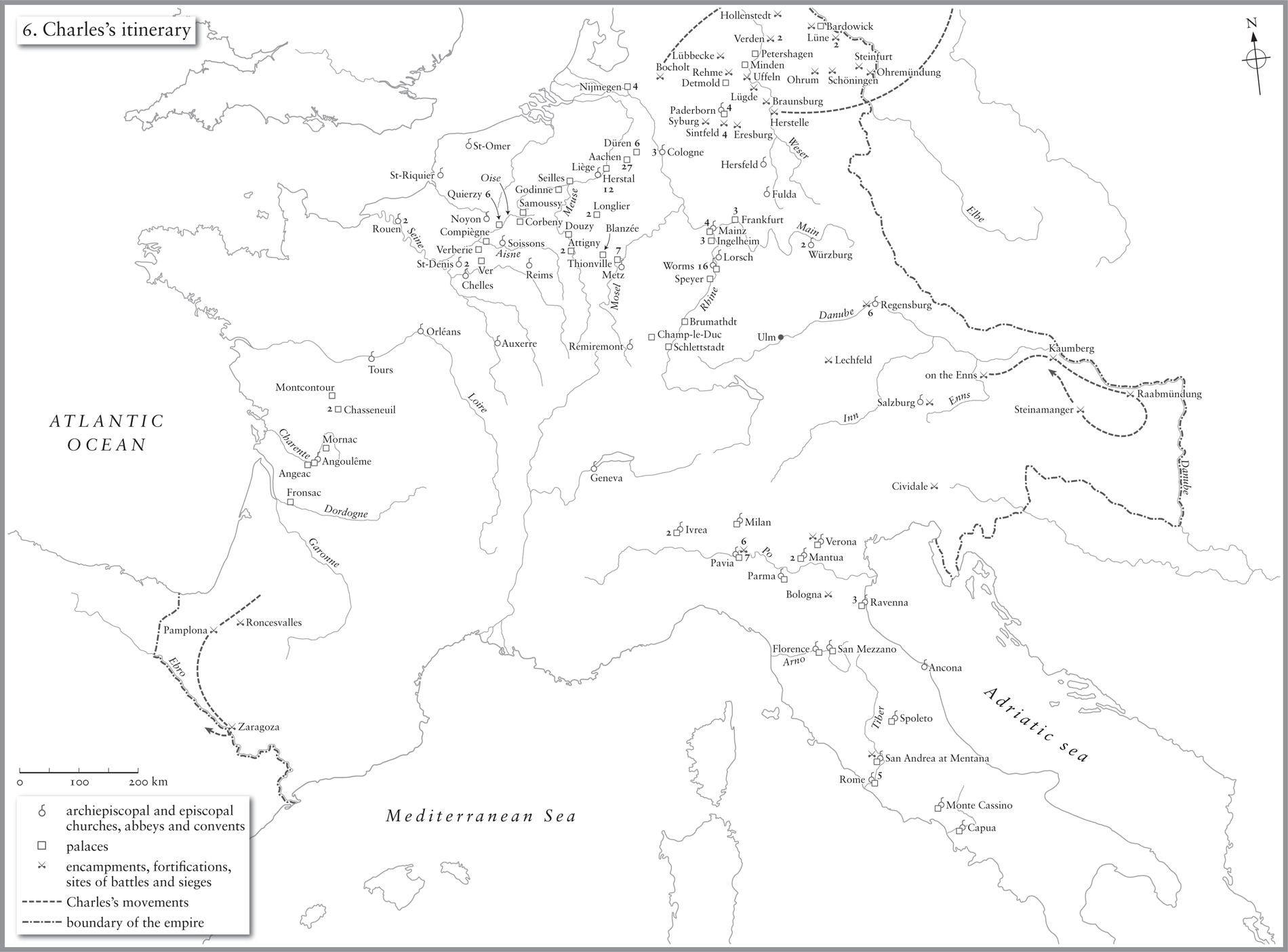
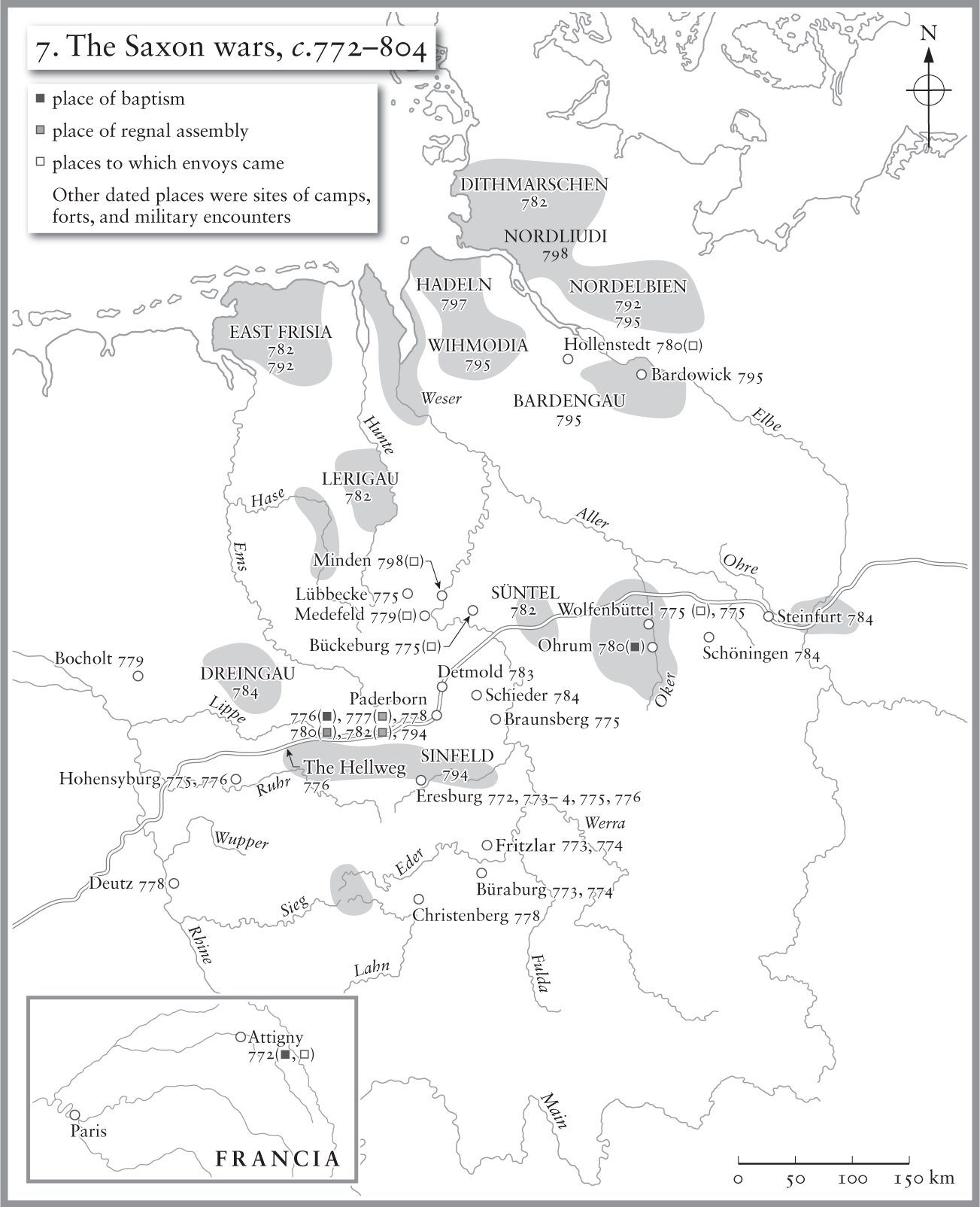
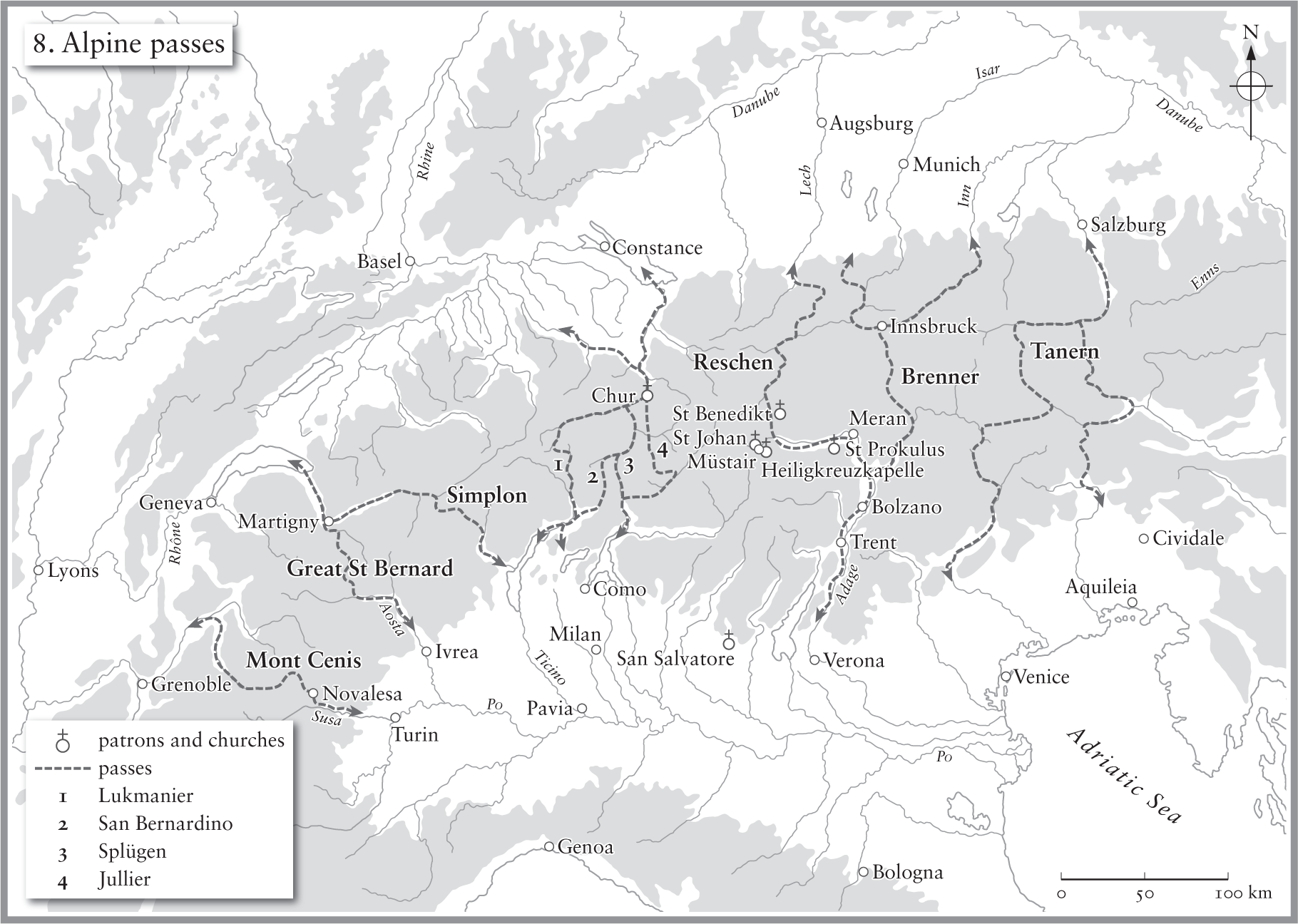
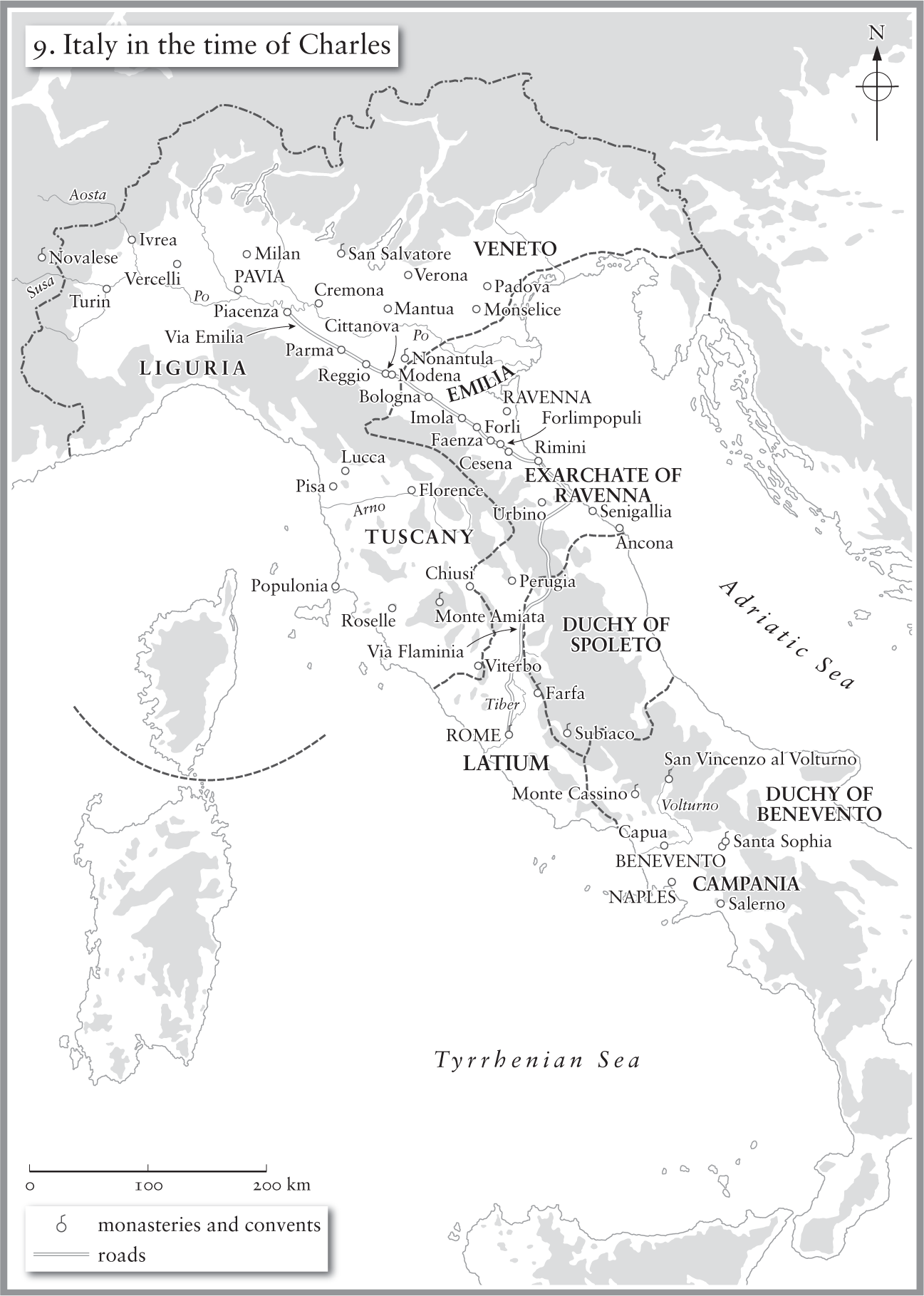

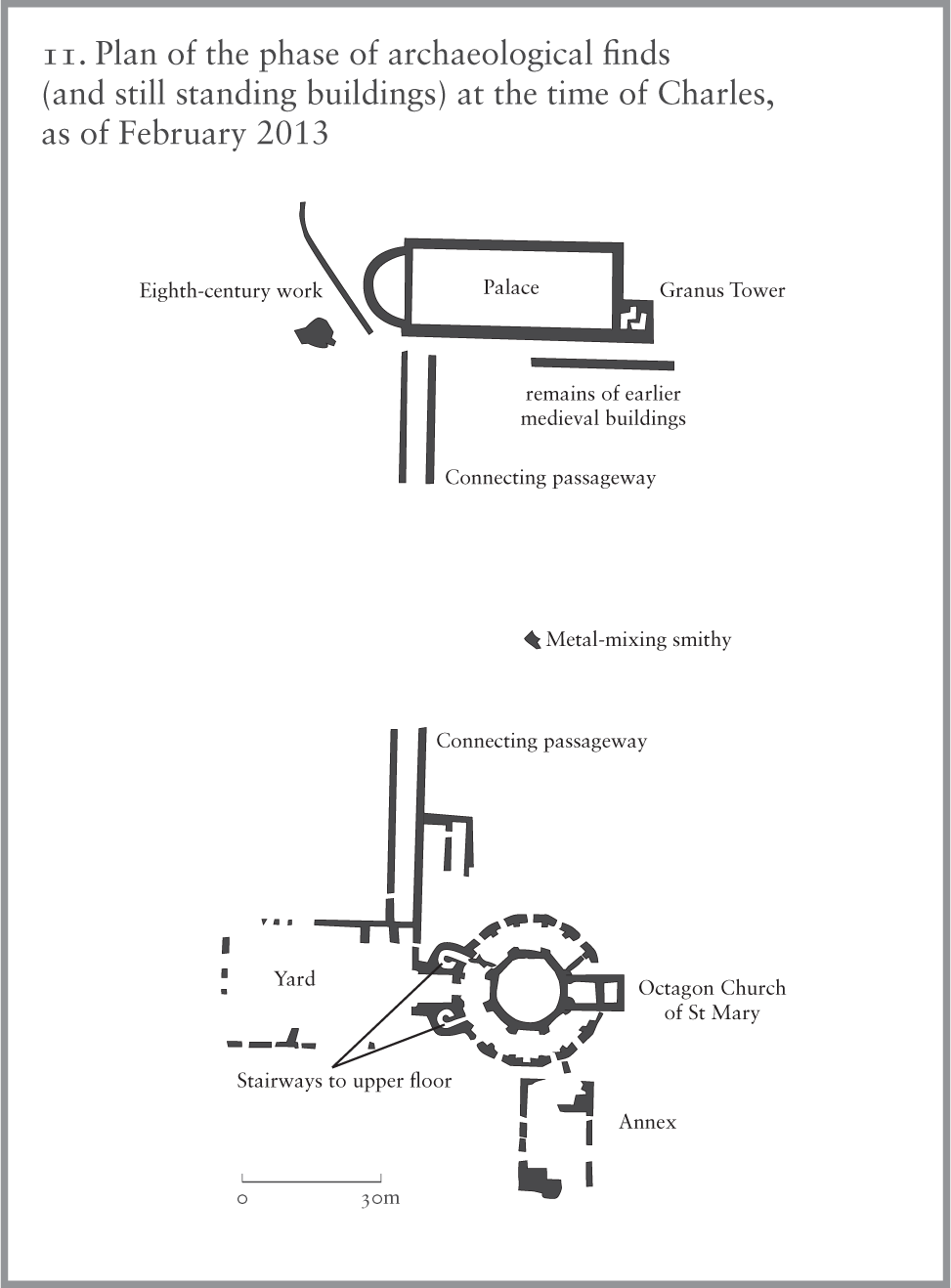
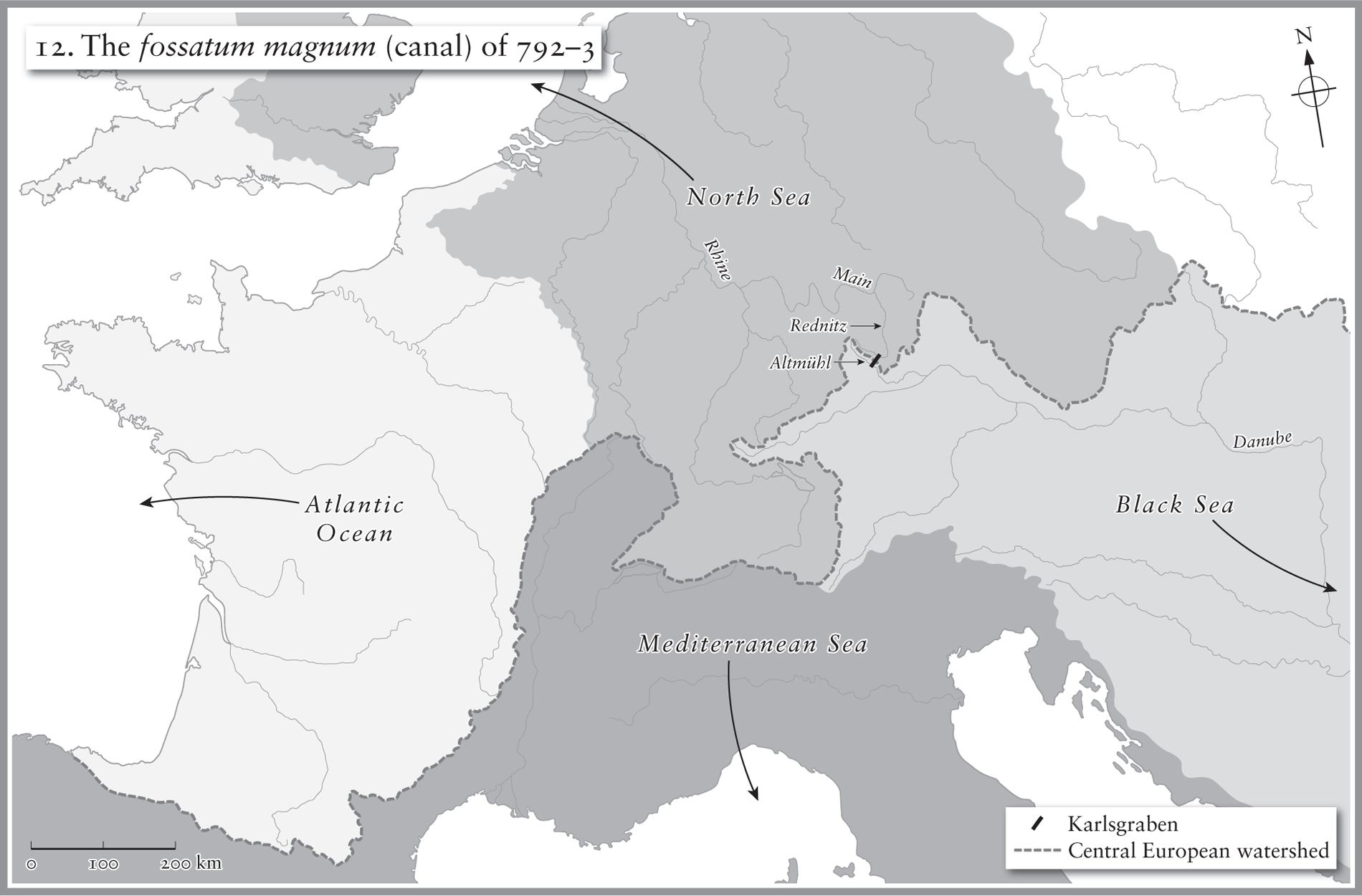
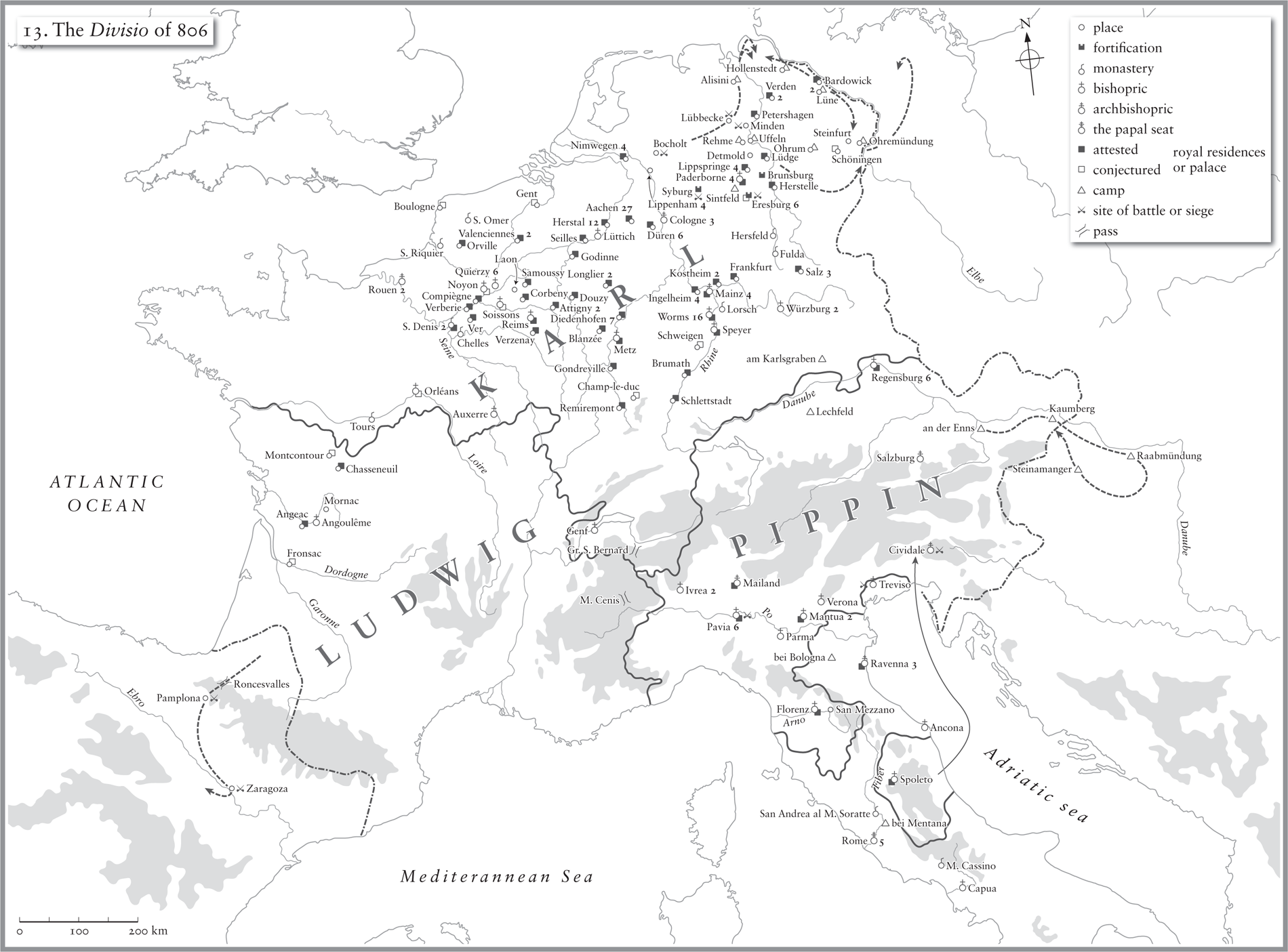
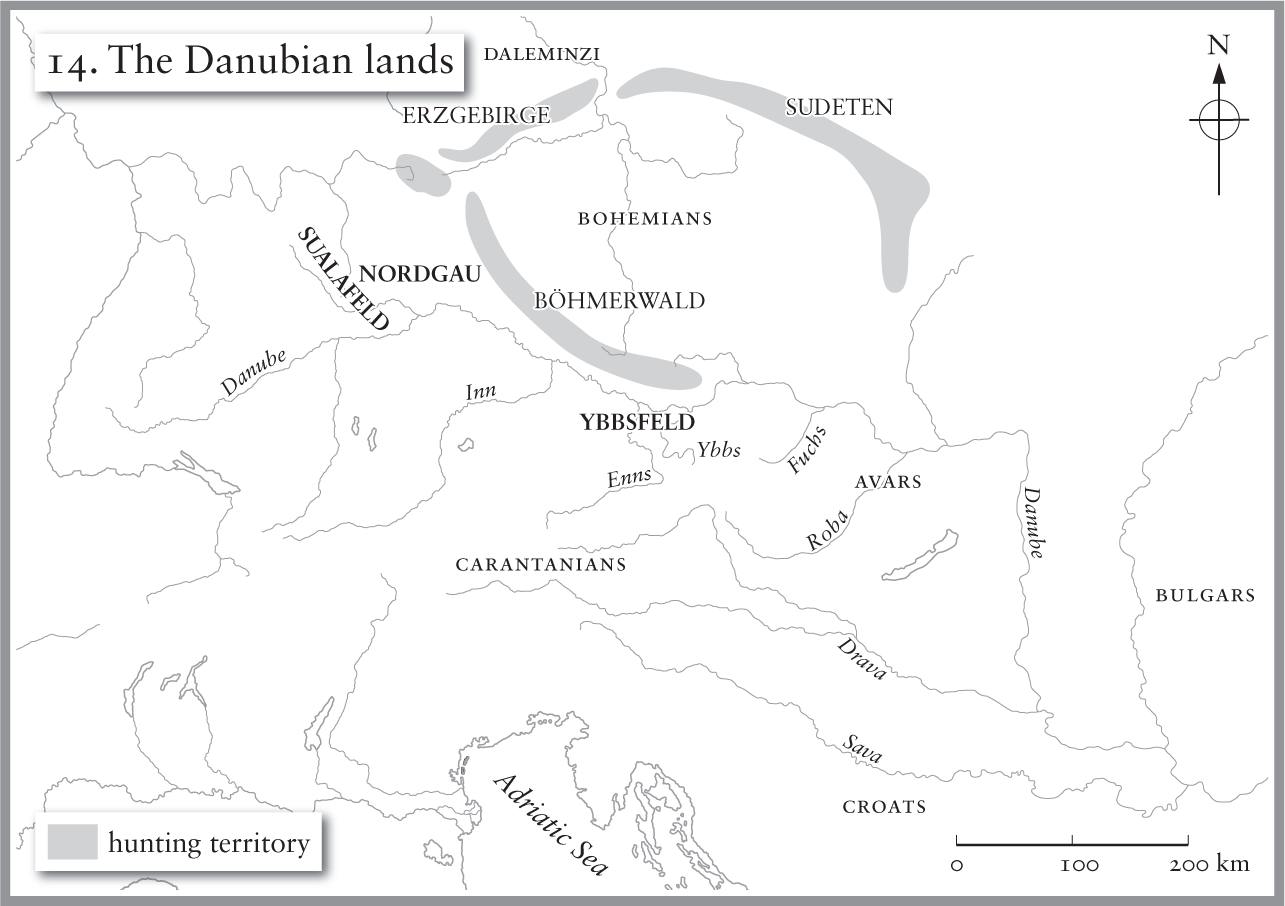

List of Genealogies
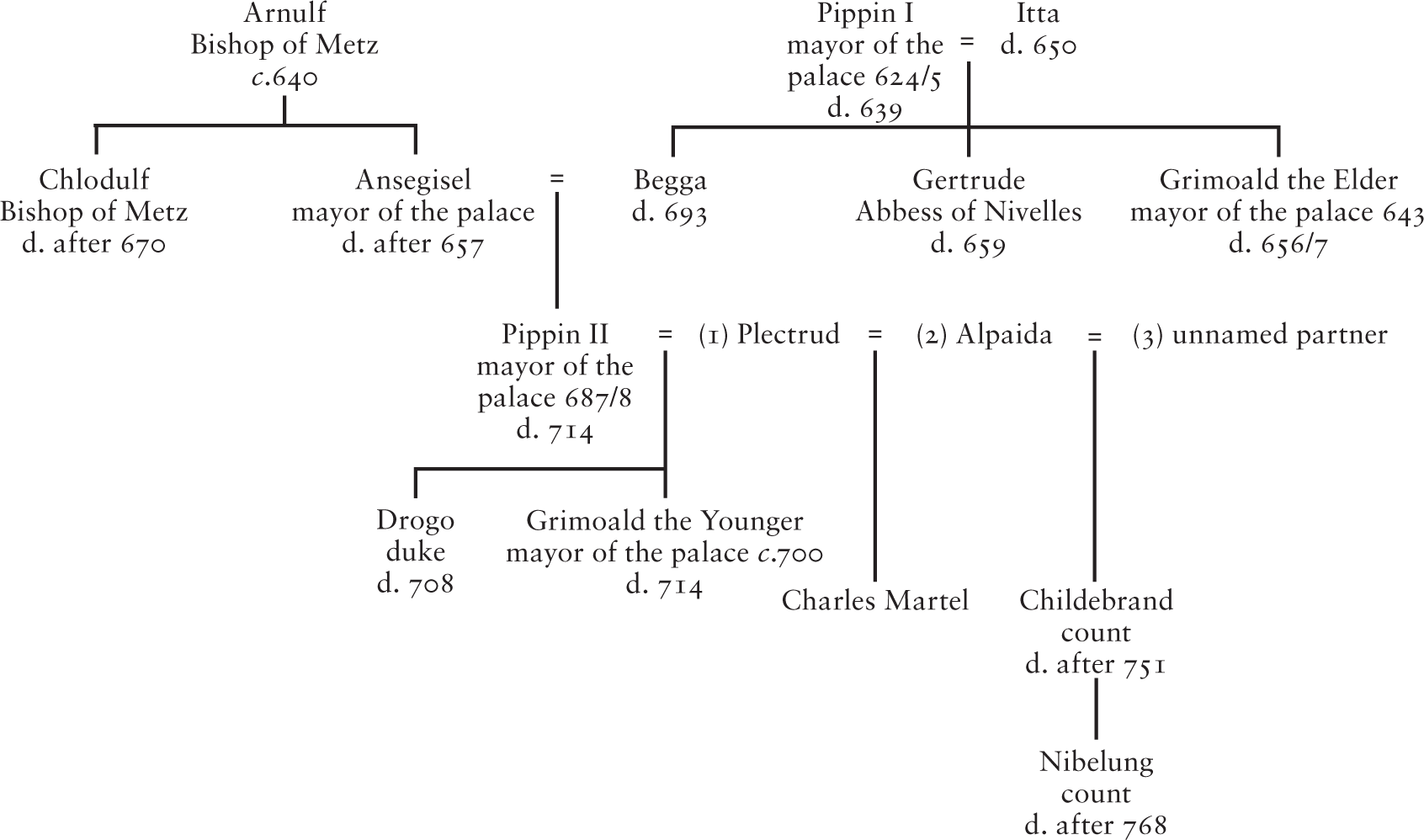
Genealogy A: Arnulfings, Pippinds, Carolingians
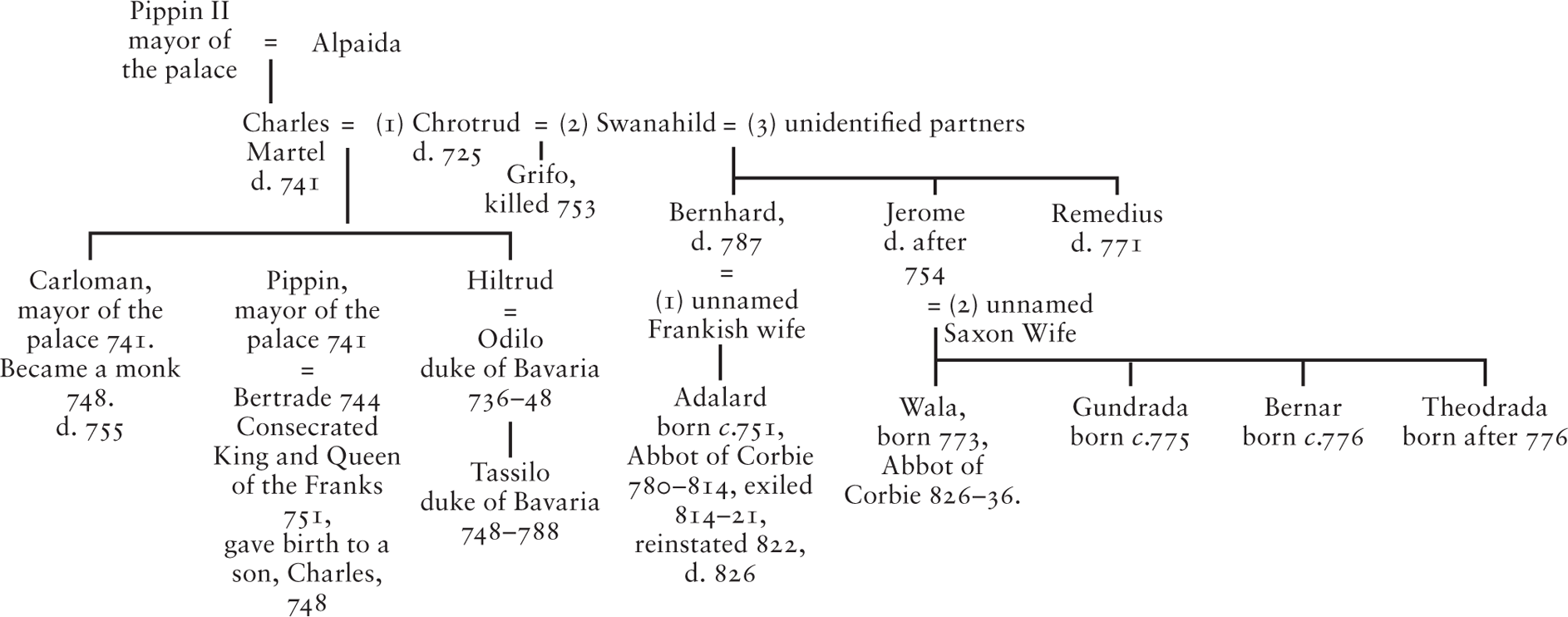
Genealogy B: The descendants of Pippin and Alpaida

Genealogy C: The family of Charles
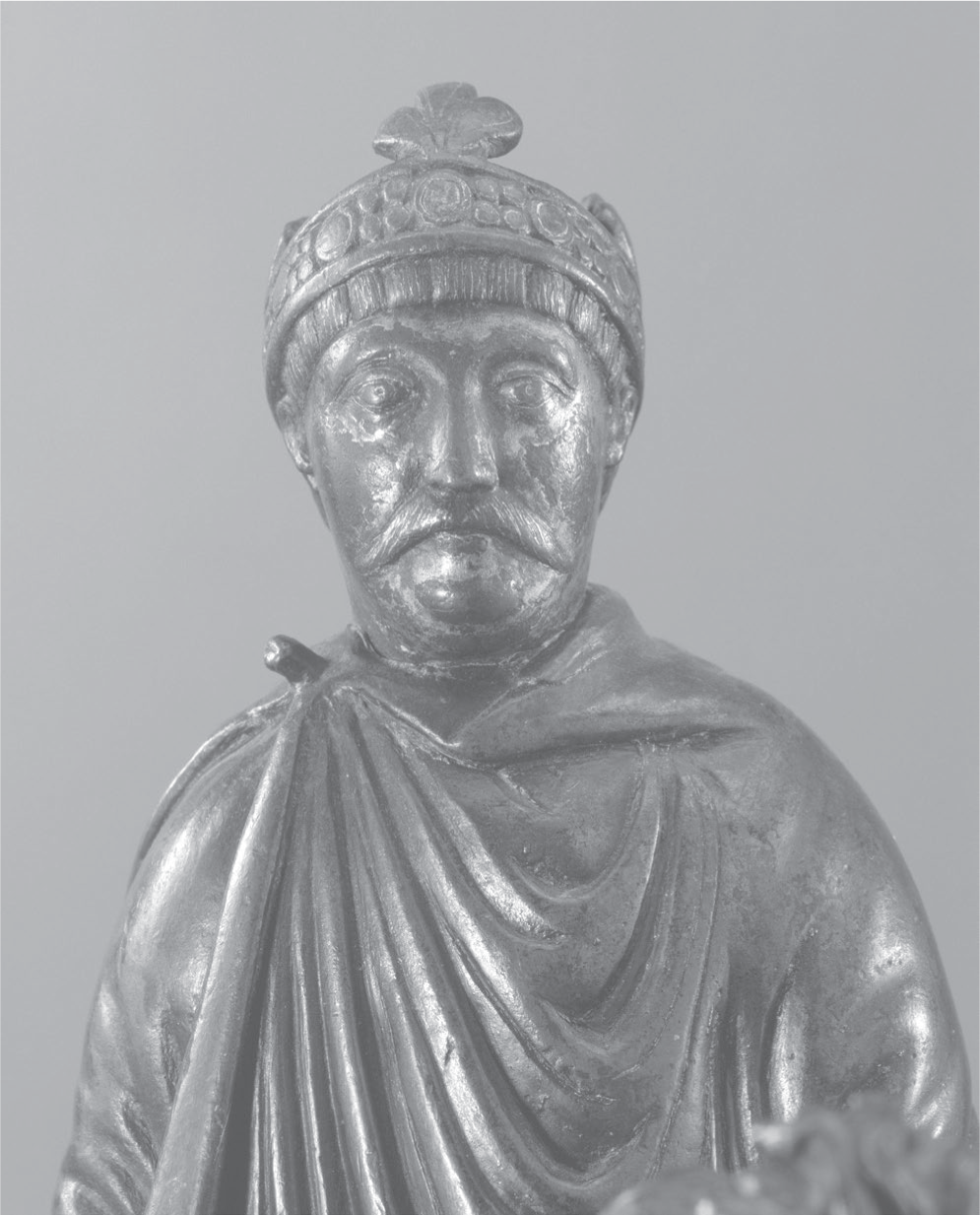
Bonze equestrian statuette of Charles.

By Way of Conclusion
Just because this book is a biography, I have kept the focus, as far as possible, on the course of Charless life. I have been attentive to ongoing trends and changes in the world that surrounded him, his responses to those, and to the contingencies that occurred around him and sometimes ambushed him, and the social structures that framed his life. I have kept to a chronological sequence: a life through time.
In the early seventh century, Bishop Isidore of Seville (c.560636) in his encyclopedic work, The Etymologies, transmitted the knowledge of Antiquity to early medieval Europe. In Book XI, ii, De homine et portentis, About human beings and portents, Isidore identified six ages of man, expanding on these in thirty-seven sections. The six ages were:

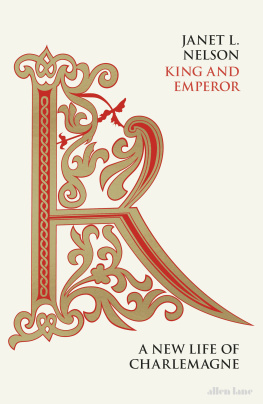


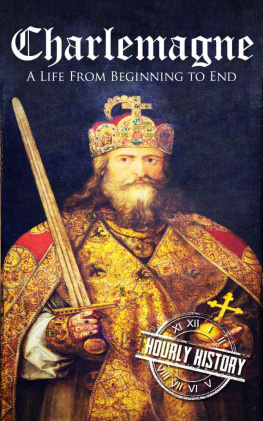
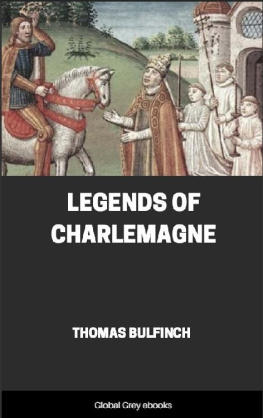
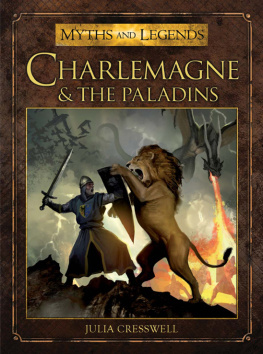
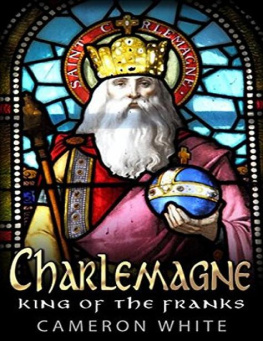



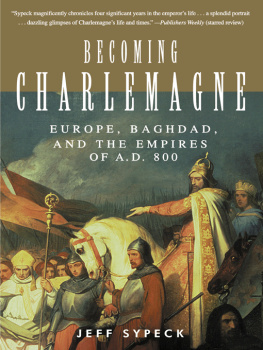



















 Genealogy A: Arnulfings, Pippinds, Carolingians
Genealogy A: Arnulfings, Pippinds, Carolingians Genealogy B: The descendants of Pippin and Alpaida
Genealogy B: The descendants of Pippin and Alpaida Genealogy C: The family of Charles
Genealogy C: The family of Charles Bonze equestrian statuette of Charles.
Bonze equestrian statuette of Charles.